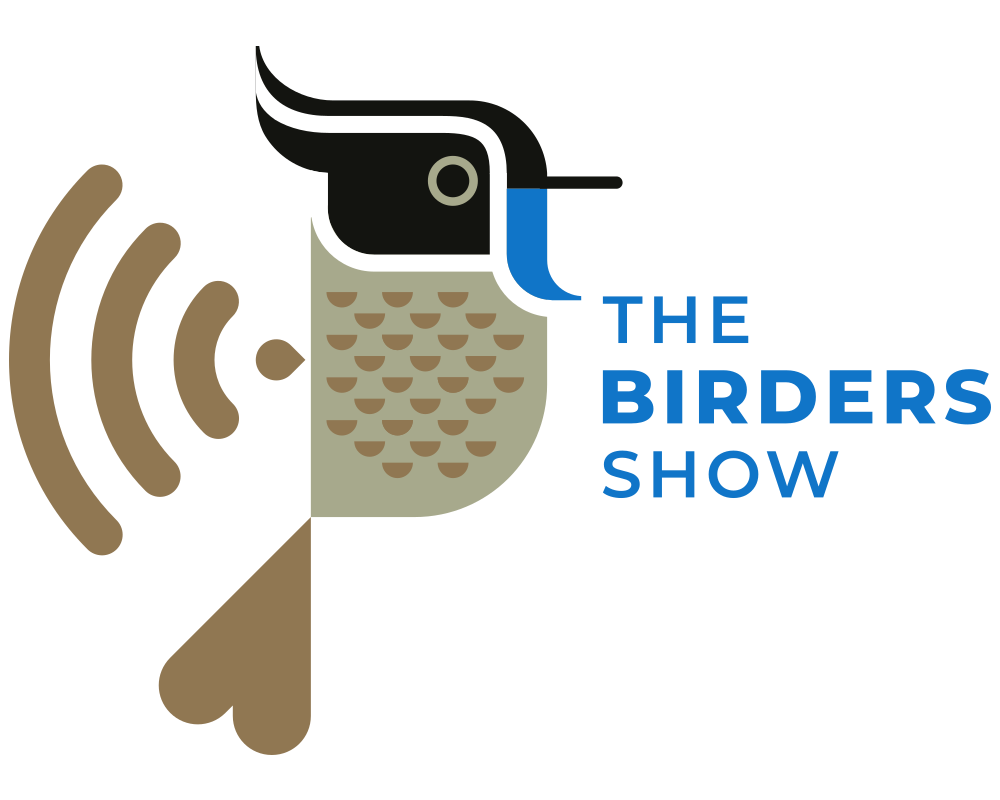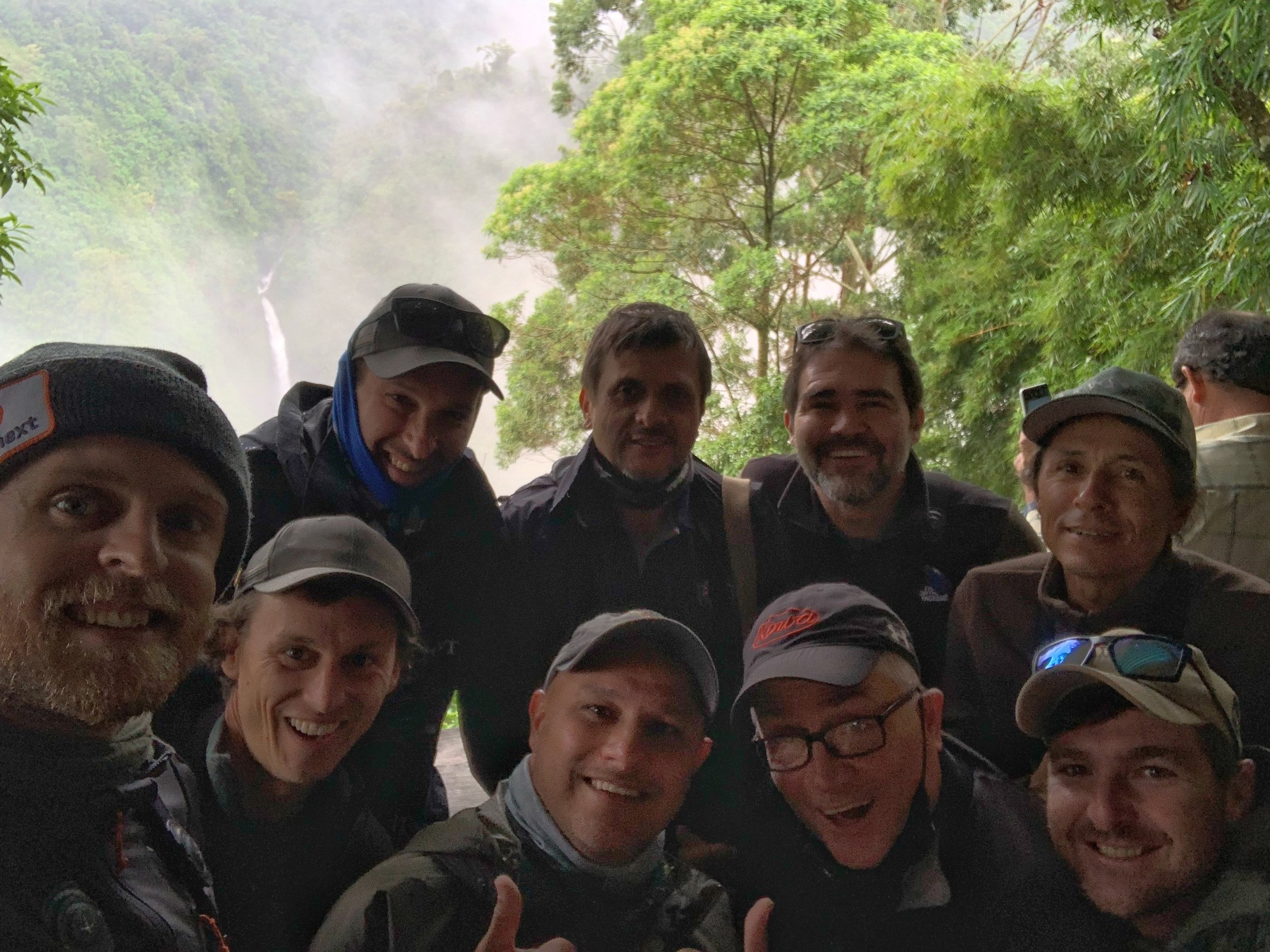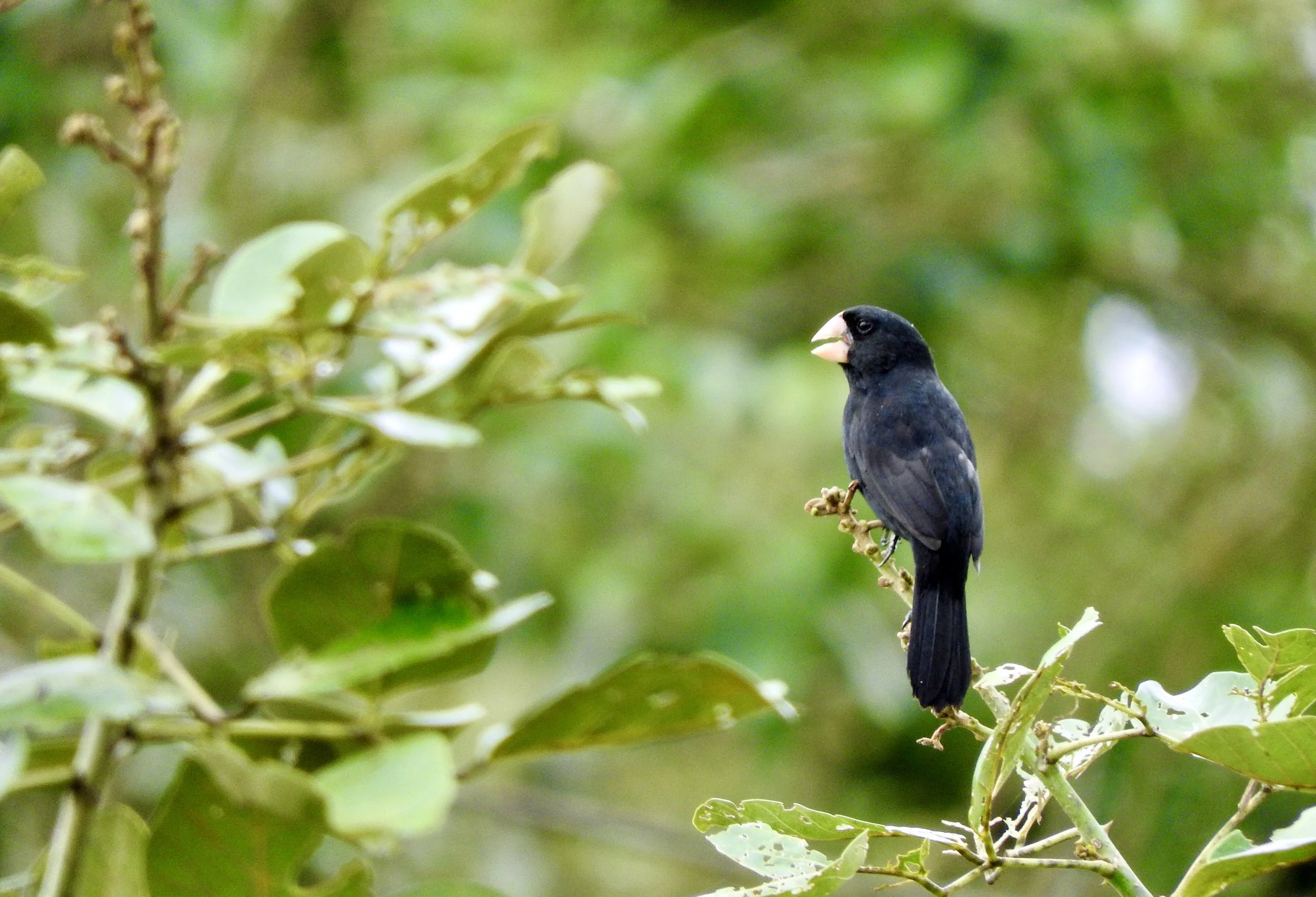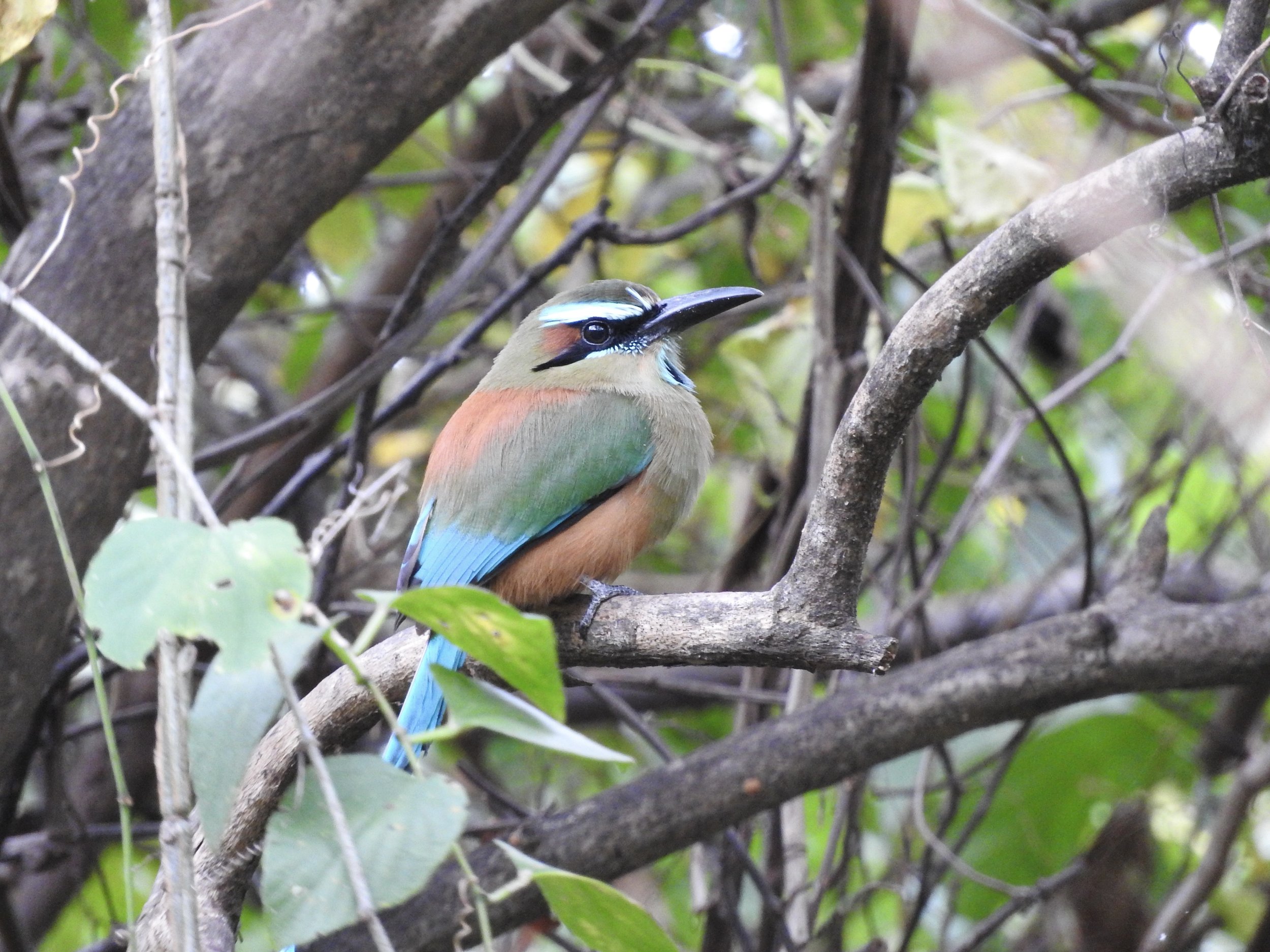Birding Costa Rica: Poás Volcano and Mirador Cinchona
Northern Emerald Toucanet
Hosts Diego Calderón and Chris Bell, took The Birders Show to Costa Rica. Here’s Part Two of Chris’s trip diary for Field Notes.
A Sparrow Hunt and a Wet Volcano
Our Costa Rica trip with the ICT (Instituto Costarricense de Turismo) started with a bleary-eyed 4:30 am wake-up call. After a quick shower and a hurried bag pack, I boarded the bus along with my fellow birders, and we set out north from San José. Our itinerary for the next eight days packed in a huge variety of habitats and birding hotspots, but it made for long days, and many early mornings, so it was a routine I would quickly get used to. Thankfully, the atmosphere on our bus was jovial - how could it be anything else when we had more than a week of world-class birding to look forward to?!
As we gradually climbed up and out of San José towards Poás Volcano, we were greeted by a beautiful dawn and patches of blue sky peeking through white clouds overhead. It was a promising start, and the birding began soon enough with our first stop of the trip at a roadside coffee plantation. Our guide Diego Quesada wanted to quickly try for the Costa Rican endemic Cabanis's Ground-Sparrow. This was a major target species for which we had better chances later in the trip, but if you can nail down a tricky target early on, then so much the better.
Birding Fact: Cabanis’s Ground-Sparrow (Melozone cabanisi) was recently split from Prevost’s Ground-Sparrow (Melozone biarcuatum). When birds are ‘split’ it’s when scientific evidence tells us that birds previously thought to be one species are actually two or more. For birders, it’s always worth spotting subspecies in case of a future split.
The group dutifully scanned the roadside trees and coffee plants. Although we didn't manage to spot any Cabanis's Ground-Sparrows, we did turn up some pretty White-eared Ground-Sparrows, the first of many Wilson's Warblers of the trip, and a large group of Crimson-fronted Parakeets. So, off to a good start, we boarded the bus and headed to Poás.
This stunning male Baltimore Oriole didn’t seem put off by the rain
It was at this point that the morning took a rather dramatic turn. As we steadily climbed up towards the volcano's slopes, the weather quickly deteriorated. Clouds rolled in, and the wind picked up as we parked the bus near the volcano national park trail entrance. Undeterred, we grabbed our rain gear and headed up the trail.
The next hour was the definition of tricky birding as constant gusts of strong wind and rain showers kept the birds undercover and the viewing difficult. Even when the rain let up, the wind kept showering us with water droplets from the forest. However, despite the harsh conditions, we managed some (fleeting) views of quite a few good birds, including my lifer Flame-throated Warbler, Black-and-Yellow Silky-Flycatcher, and Yellow-winged Vireo. Not a bad start, all things considered.
[eBird Checklist for Poás Volcano]
The Magical Roadside Hummingbird Garden
As the weather continued to deteriorate, we left Poás and continued on the road north. Somewhere along the road (it was tough to tell exactly where we were with all the clouds and rain), we stopped at a large patch of verbenas. Diego told us it was a good spot for a few target hummingbirds, so we all scanned it from the bus through the rain-splattered bus windows. At first, we couldn't see a thing, and it didn't seem much like hummer weather, so we prepared to drive on. Thankfully, at that exact moment, someone called out "Purple-throated Mountain-Gem," so we all piled off the bus into the rain to get a better look at this pretty little hummingbird.
And how lucky that we did, because as it turns out, there was plenty of hummingbird activity happening at this magical little flower patch, rain be damned! In just ten minutes scanning the verbenas, we turned up seven hummingbird species, five of which were lifers for me. However, the real standout was a resplendent male Scintillant Hummingbird, its brilliant red throat still glistening even in the worst light conditions imaginable. I would end up with 31 hummingbird species on my Costa Rica trip list, but this little verbena patch remains my undisputed hummingbird highlight of the 12 days, mainly because it was such a surprise when spirits were starting to flag.
Birding Fact: the Scintillant Hummingbird (Selasphorus scintilla) is one of the smallest birds in existence, only marginally bigger than the tiny Bee Hummingbird (Mellisuga helenae) of Cuba. It measures just 6.5–8 cm (2.6–3.1 in), including the bill.
The Crimson-collared Tanager was another star bird of the day
Soda Y Mirador Cinchona: Bird Feeder Heaven
At this point, the group decided to retreat from the weather to a nearby roadside restaurant, the Soda Y Mirador Cinchona. This was no ordinary restaurant: Cinchona is home to some of the country's finest bird feeders, which play host to a wealth of local specialties, all of which can be comfortably observed a point-blank range with a hot coffee and plates of delicious gallo pinto.
The rain showed no signs of abating, so we ordered some brunch and coffee and started watching the feeders. As a virgin Costa Rica birder, I was in heaven, with binocular-melting views of Prong-billed Barbet, Crimson-collared Tanager, Northern Emerald Toucanet, Black Guan, and host of tanagers, warblers, and orioles as they lined up to gorge on papaya and banana just feet from the deck. Typically I'm not a huge "feeder birder," preferring to get out on a trail and find the birds myself, but sometimes you have to kick back and enjoy the laid-back birding, and this seemed as good a time as any.
A Prong-billed Barbet tucking into a banana feast at Mirador Cinchona
Cinchona was also a real hummingbird hotspot: the dominant species were undoubtedly Violet Sabrewing and Green-crowned Brilliant, but every now and then a smart little Black-bellied Hummingbird would find a space at a feeder, and we got quick looks at the endemic Coppery-headed Emerald as it dodged the unwanted attentions of a particularly aggressive sabrewing.
[eBird Checklist for Soda Y Mirador Cinchona]
American Dippers and Rufous-browed Tyrannulets
Just as we were preparing to leave Cinchona, the clouds even parted for a few minutes to give us a view of the 70m-tall San Fernando waterfall across the valley. We'd dried off enough, so it was time to take a chance against the rain and bird another nearby site, the Virgen del Socorro road. We parked the bus at a bridge spanning a fast-flowing mountain river and started birding up the road.
The San Fernando Waterfall seen from Soda Y Mirador Cinchona restaurant
Viewing conditions were still challenging, but the activity was good after a morning of heavy rain. A Louisiana Waterthrush bobbed and weaved along the riverbank, while a pair of American Dippers braved the wilder water. Mixed flock activity was also brisk, with great looks at Emerald and Silver-throated Tanagers along with a solid supporting cast of migrant warblers and vireos. The standout bird of the afternoon, though, was a Rufous-browed Tyrannulet, a nondescript little flycatcher that made us work hard for a look but eventually afforded us nice views. It had an especially noteworthy habit of flicking up one wing whenever it landed, a helpful ID hint since the eponymous rufous-brow is pretty tricky to see, especially in a species that favors the canopy.
[eBird Checklist for Virgen del Socorro]
The rain was starting up again, so at about 3 pm, we called it a day and drove to our hotel for the night, Linda Vista Lodge, overlooking Arenal Lake. The rain had indeed made the day a challenge, but we enthusiastically toasted our excellent start with a few well-earned Imperial beers at dinner that evening. I had personally managed to spot 24 more lifers that day, which meant 50 for the Costa Rica trip in just two days. Not a bad start at all.
Birding Fact: ‘lifer’ is a birding term for a species that you’ve never seen before, a new bird for your life list. Birders might talk of regional, national, or global lifers, or even local patch lifers.
Happy birders enjoying the view from the Soda Y Mirador Cinchona












